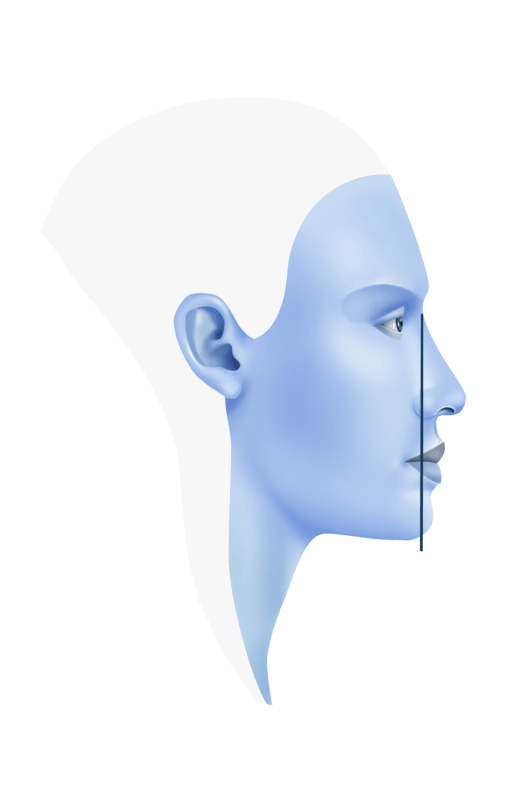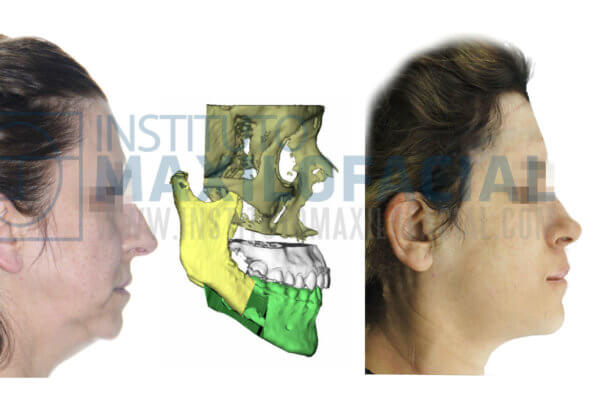A large proportion of cases of facelift are made following an erroneous diagnosis: patients go to the surgeon looking for a solution for the sagging of their soft tissues, and the surgeons usually advise a facelift, when in fact the lack of tissue support in many cases is due to a lack of projection of the patient's bone structure.
The facelift is a treatment indicated to rejuvenate the face in people who have a well-balanced bone structure and have soft tissue sagging. On the other hand, when said sagging is due to a bad placement of the facial bones, the facelift achieves unnatural result and/or it ends up accentuating the lack of harmony of the patient's face.
By projecting the facial bones to their ideal position, the maxillofacial surgeon manages to provide a correct support to the soft tissues, giving tension to the face in a very natural way, while achieving a correct balance of the patient's features.
When the patient does not have a good bone projection on the facial bone structure, orthofacial surgery with bimaxillary advancement, or reverse facelift, is the indicated treatment. In this surgical procedure, the surgeon advances (and if necessary, rotates) the mandibular and maxillary bones in a block. In this way, by projecting the facial bones to their ideal position, the maxillofacial surgeon manages to provide a correct support to the soft tissues, tensing the face in a very natural way, while achieving a correct balance of the facial features.
Thus, a reverse facelift achieves a great rejuvenating effect of the face and a greater definition in the line of the neck, the mandibular contour, the chin and the lips.
But how do I know if I have a good bone projection on my face?
 It's very easy, in a profile picture, locate the base of your nose and draw a vertical line from that point. According to the reference plane designed and published by Dr. Hernández Alfaro, in patients with a good bone projection, both the maxilla and the jaw should touch or be in front of that line, if this is not the case in your case, it's very likely that your bones do not have the proper projection.
It's very easy, in a profile picture, locate the base of your nose and draw a vertical line from that point. According to the reference plane designed and published by Dr. Hernández Alfaro, in patients with a good bone projection, both the maxilla and the jaw should touch or be in front of that line, if this is not the case in your case, it's very likely that your bones do not have the proper projection.
A visit with the maxillofacial surgeon is the best way to confirm the diagnosis. Call us at +34 933933185 or write to international@institutomaxilofacial.com to learn more about reverse facelift and its benefits.
Related:








